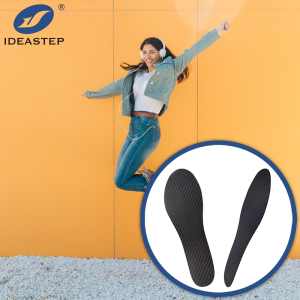
We only know that carbon fiber insoles are relatively expensive. So, why are carbon fiber insoles more expensive? How are carbon fiber insoles produced? Today, let’s discuss this topic.
Here is a general overview of the steps involved:
1. Design and Mold Creation
The first step is to design the shape and contours of the carbon fiber insole. This can be done using computer-aided design (CAD) software. Once the design is finalized, a mold is created based on the desired shape of the insole.
2. Preparing the Carbon Fiber Sheets
Carbon fiber sheets or fabric are used as the base material for the insoles. These sheets are made of thin carbon fibers woven together. They are typically pre-impregnated with a resin, such as epoxy, for added strength and rigidity.
3. Layering and Resin Application
The carbon fiber sheets are cut into the desired shape and layered onto the mold. Additional layers may be added for reinforcement in specific areas, such as the arch or heel. The layers are carefully positioned to achieve the desired structural integrity and support. An epoxy resin is then applied to the layers, saturating the carbon fibers and binding them together.
4. Compression and Curing
Once the layers are in place and resin is applied, the mold is closed and placed into a compression machine. The compression helps remove excess resin and ensures even distribution of the carbon fibers. The insole is then cured under controlled temperature and pressure conditions to allow the resin to harden and bond the carbon fiber layers together.
5. Trimming and Finishing
After the curing process, the carbon fiber insole is removed from the mold. Any excess material or rough edges are trimmed, and the insole is shaped and sanded to its final form. Additional components, such as cushioning or top covers, may be added to enhance comfort and performance.
6. Quality Control
The final step involves inspecting the carbon fiber insoles for any defects or imperfections. This may include checking for proper shape, structural integrity, and overall quality. Insoles that pass the quality control measures are then ready for packaging and distribution.
It’s important to note that the specific production process may vary depending on the manufacturer and the intended design and features of the carbon fiber insoles. If you are interested in carbon fiber insoles, you can continue to visit this page (https://www.aideastep.com/carbon-fiber-insoles/) and tell us your needs.
